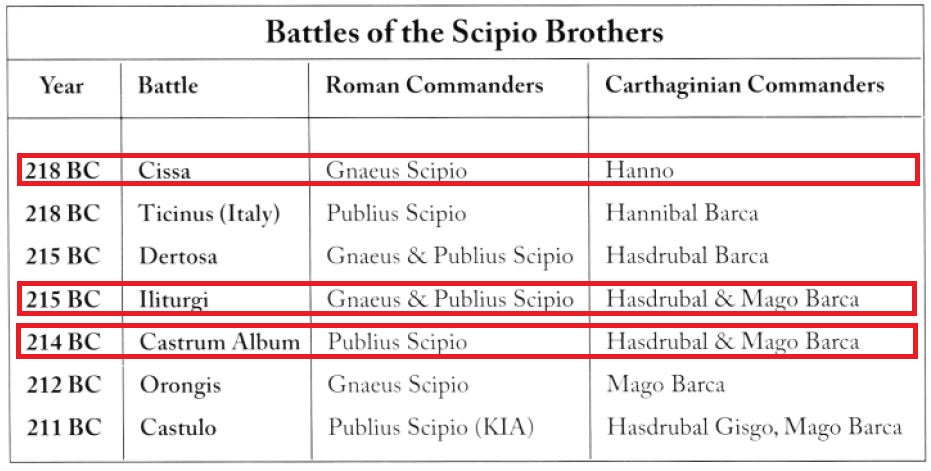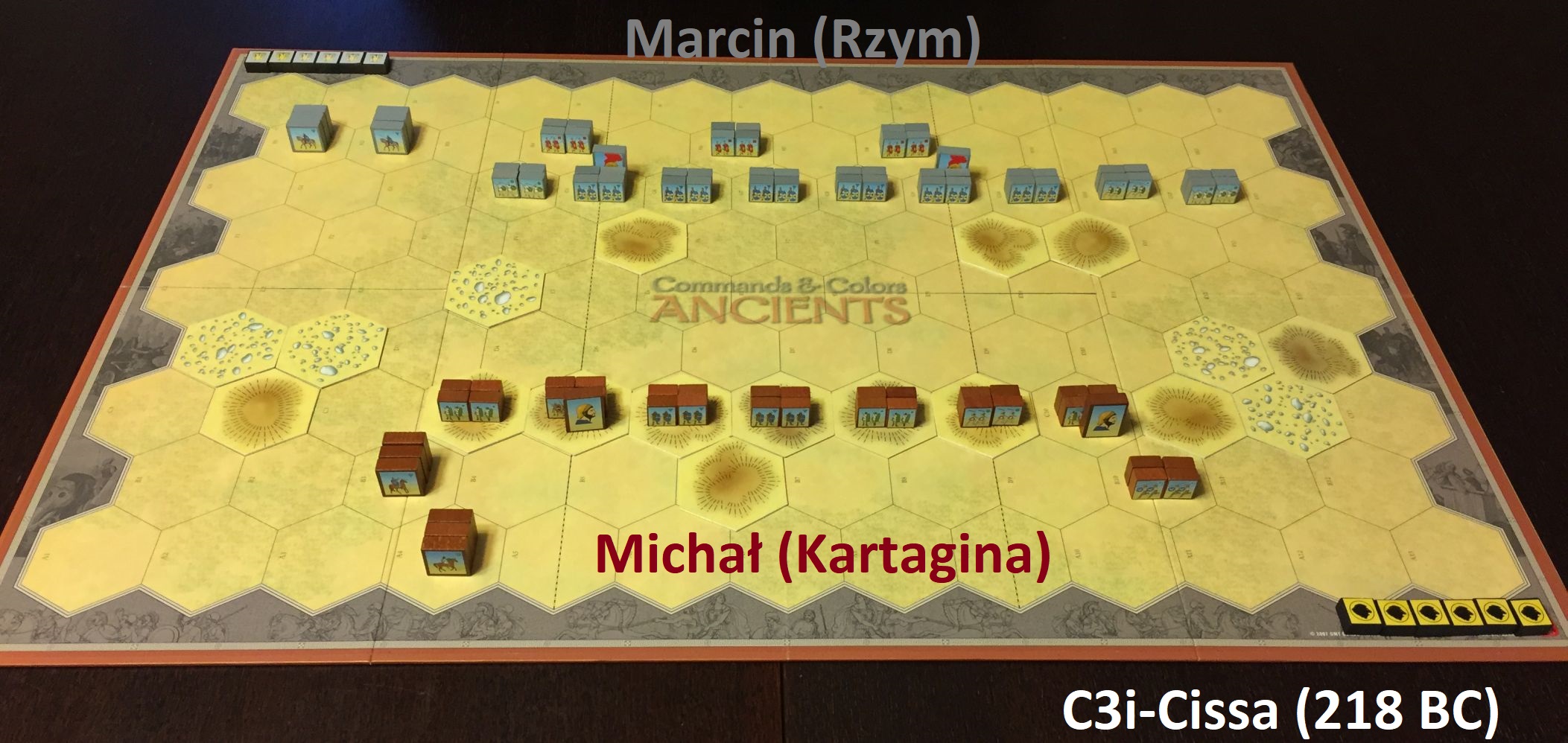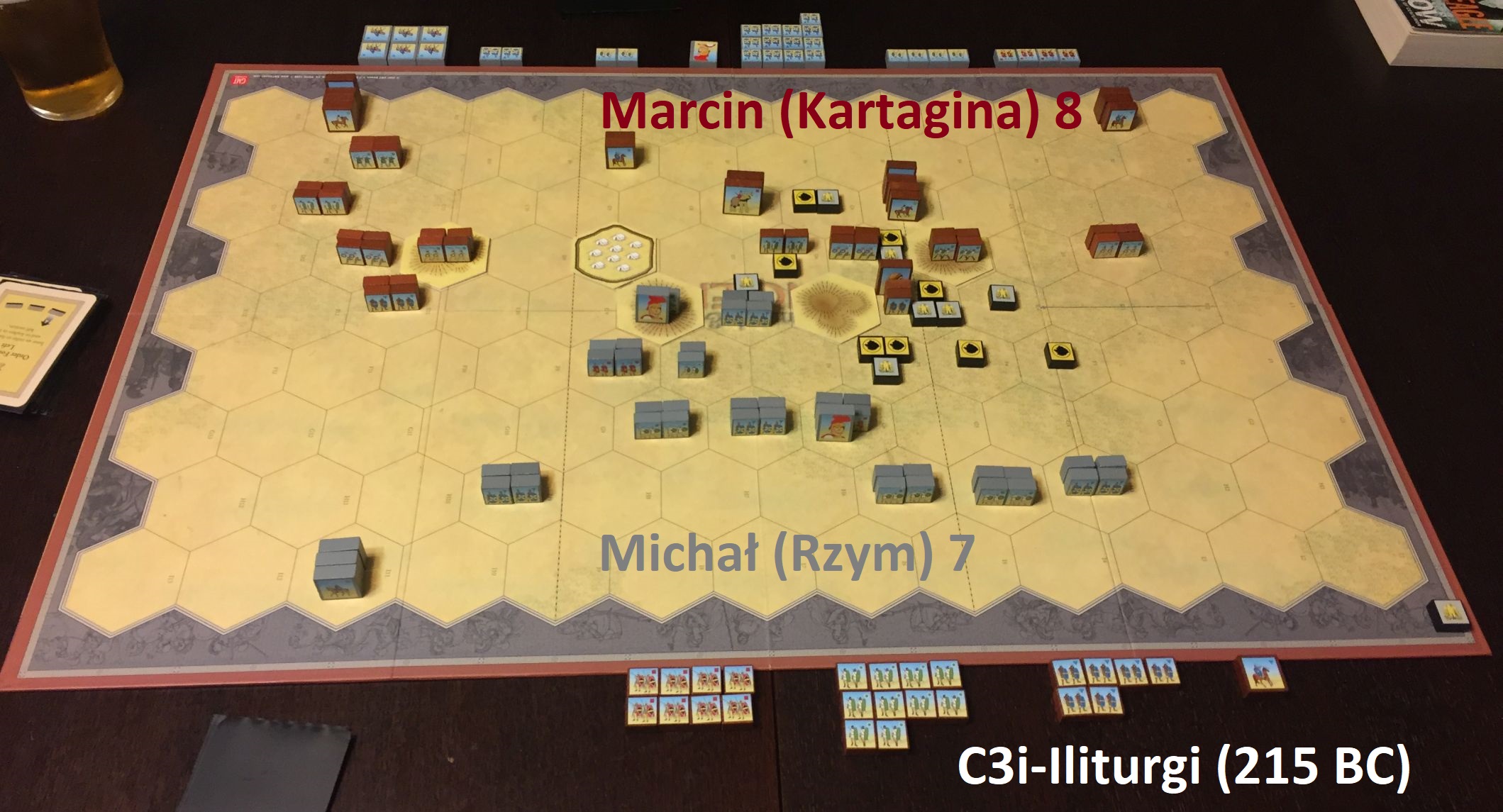I am keen on playing Commands Colors Ancients whenever possible. Still, if I can do it in a historical context with scenarios set-up in consecutive campaigns, this is even better. And once you played all battles from the base game and expansion, there is always possibility to look for more official stuff in C3i!
What is C3i? It is a GMT Games magazine, funded in 1992 and published by Rodger B. MacGowan. There you can find tons of interesting materials regarding wargames, not necessarily always published by GMT. New scenarios, designer notes, historical articles. Some time ago one of the magazines had a very interesting CCA related add on – The Twin Thunderbolts — Gnaeus & Publius Scipio Commands & Colors Ancients Battles – and that was played by me and my wargaming friend, Marcin.
So the Second Punic War, largest conflict on antiquity, is mainly known by epic battles like Cannae or Zama and great leaders – Hannibal Barca and Scipio Africanus. Still, a lot was happening in the Carthage backyard, i.e. Spain, which definitely had a great impact on the final outcome of the war.
Gnaeus and Publius Scipio fought a series of interesting battles during the first half of the Second PunicWar. The Battles of Ticinus, Dertosa, and Castulo were included as core scenarios in CCA. In C3i#20 article we had three new battles of the Scipio brothers: Cissa (218 BC), Iliturgi (215 BC) and Castrum Album (214 BC). Those are terrain rich engagements which provide for a very interesting play! So let us move to the session reports.
Cissa (218 BC)
Historical Background
As the Second Punic War began (218 BC), Hannibal first conquered northern Spain. Before heading to Italy, he left his brother Hasdrubal in southern Spain and Hanno in the north. The consul Publius Scipio had been assigned an army with which to invade Spain and defeat Hannibal.
However, when Scipio arrived at Massilia, he was shocked to discover Hannibal’s army was headed to the Alps. Publius returned to defend Italy (a Roman defeat at Ticinus River), but he sent his army on to Spain under his elder brother Gnaeus. The Romans were not expected so late in the year, and quickly overran northern Spain and then advanced on Hanno’s camp at Cissa. Although heavily outnumbered, Hanno decided to occupy a strong position on high ground rather than retreat to join Hasdrubal. Gnaeus Scipio did not hesitate and charged his army up the heights in a frontal assault. The fighting was brutal, but the outnumbered Carthaginians were eventually driven off the heights in flight. Despite suffering heavy losses, the Romans had the victory. The Romans had established a foothold in Spain.
Publius finally arrived a year later, bringing a third legion of 8,000 reinforcements. Each of the Scipio brothers could now command his own army in Spain.
In the first game I led the defensively placed Punic forces, while Marcin had the task of assaulting my well entrenched troops:
- as the Romans approached, I reorganized my leaders to cover more units with their support and better placed cavalry
- soon, the assault uphill started, and although some of my units were severely mauled, they hold back
- when the Roman line started to crumble, the Punic forces vigorously assaulted downhill, breaking the enemy lines
- what ensued was a full scale rout and victory for me 6-3!
Iliturgi (215 BC)
Historical Background
Following the decisive victory of the Scipio brothers at Dertosa (215 BC), Carthage sent out reinforcements for Hasdrubal Barca under his brother Mago. Hasdrubal reorganized his command into three small armies, one under his command, one led by Mago and the third under their nephew Hamilcar. Once the Romans had retired north of the Ebro River for the winter, the Carthaginians struck back in late autumn (215 BC) and besieged Iliturgi.
Each Punic commander set up a separate camp around the city. The citizens of Iliturgi and their Roman garrison soon suffered from hunger, as they had been caught unprepared. Gnaeus and Publius Scipio marched to the scene with two legions to lift the siege. Upon arriving, the Scipios decided to assault Hasdrubal’s camp first, as it was the largest and the key to breaking the siege.
As the assault on Hasdrubal’s camp climaxed, the armies of Mago and Hamilcar arrived and the fighting spread out and intensified. Ultimately, the Romans emerged victorious, overrunning the camp and breaking the siege. However, the casualties were probably about equal on both sides. The campaigns of these five armies continued for another four years.
In the second game we decided to switch the sides. This time it was me playing as attacker and Marcin as well-entrenched defender:
- after some light infantry skirmish and repositioning of my forces, the medium and heavy roman legions attacked on the right
- my assault was swift and I managed to loot two out of three Punic camps
- at that moment one of the Marcin’s reserve armies hit my attacking forces in the flank; what ensued was a fierce battle, where soldiers were dying in droves
- so much was happening on Roman right / Punic left that the third Marcin’s army never arrived at the site of the battle
- in the end, the final Carthaginian assault broke my army, giving the minimal victory to the defenders 7-8; very close and exciting game!
Castrum Album (214 BC)
Historical Background
Early in the spring 214 BC Carthaginians dealt with a major Iberian uprising, crushing the rebel army and re-imposing Punic authority. Many more Roman allies would have defected if Publius Scipio had not hurried south with one legion, about 10,000 men.
Scipio camped near Castrum Album, famous as the site of Hamilcar Barca’s death fourteen years earlier. Hasdrubal, Mago and Hamilcar infiltrated the surrounding area undetected. They brought only fast-moving light infantry and mounted troops. When Publius Scipio advanced from Castrum Album towards his brother Gnaeus’ camp, he was beset by Punic skirmishers and Numidian horsemen. Whenever, the Romans charged, their opponents melted away. Publius’ command was in danger of annihilation, and he just barely cut his way through to the safety of his brother’s camp. Over 2,000 Romans were left dead along the route of his march – it was a clear Carthaginian victory.
The campaigns of the five armies would continue until both Roman armies were destroyed and both Scipio brothers killed at the battles of Castulo and Ilorca (211).
Again, I had opportunity to lead Romans in a very difficult scenario, where victory can be achieved only if the Roman player exits at least 1 unit off the Carthaginian side of the battlefield (left Punic section):
- having only 4 cards vs. Marcin’s 6, I carefully re-positioned my forces and attacked lights in the wood
- as expected, heavier Carthaginian units, hidden behind the lights, approached
- at that moment I sprung a surprise, with move-fire-move card, exiting some of the units off board (victory condition)
- what left was routing enough Punic warriors in the center to reach the victory threshold – 6 banners
- after close fight, this time luck was on my side and Romans minimally prevailed- 6-5!
Very difficult scenario for Republican army but also fun to play due to terrain!

Summary
I love to play CCA scenarios which have a lot of terrain features, allowing for tactical maneuvering. The Twin Thunderbolts campaign is one of best examples of such game-play and I can recommend to everybody who finished base game and wish for more!









Very exciting! And great to see some battles from Spain, usually overshadowed by Hannibal’s Italian campaign at the same time!
LikeLiked by 1 person